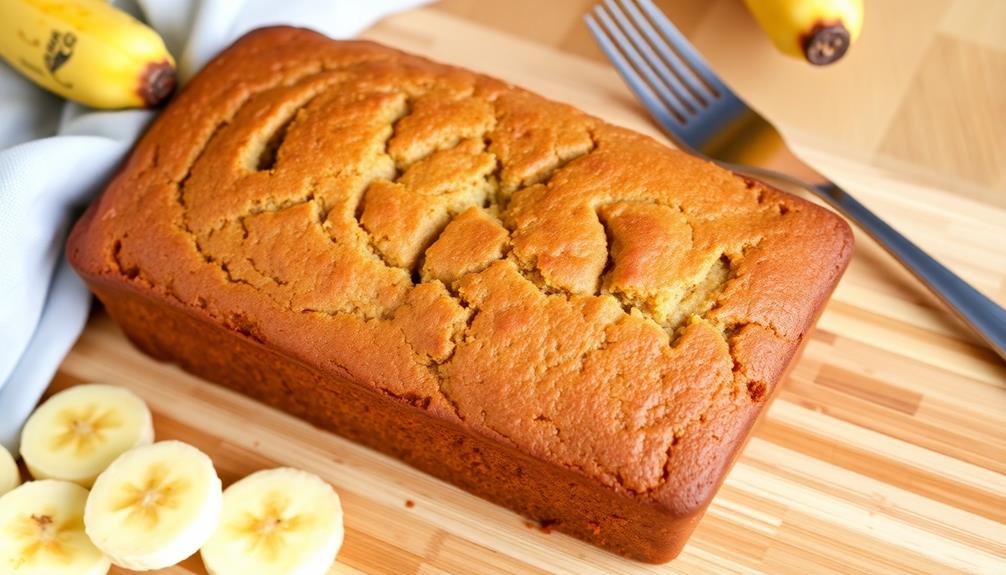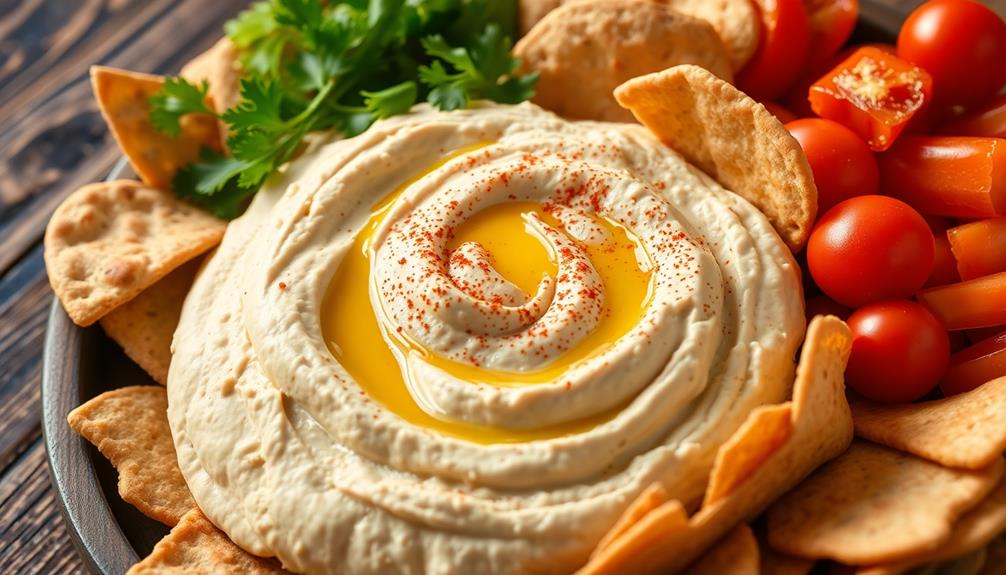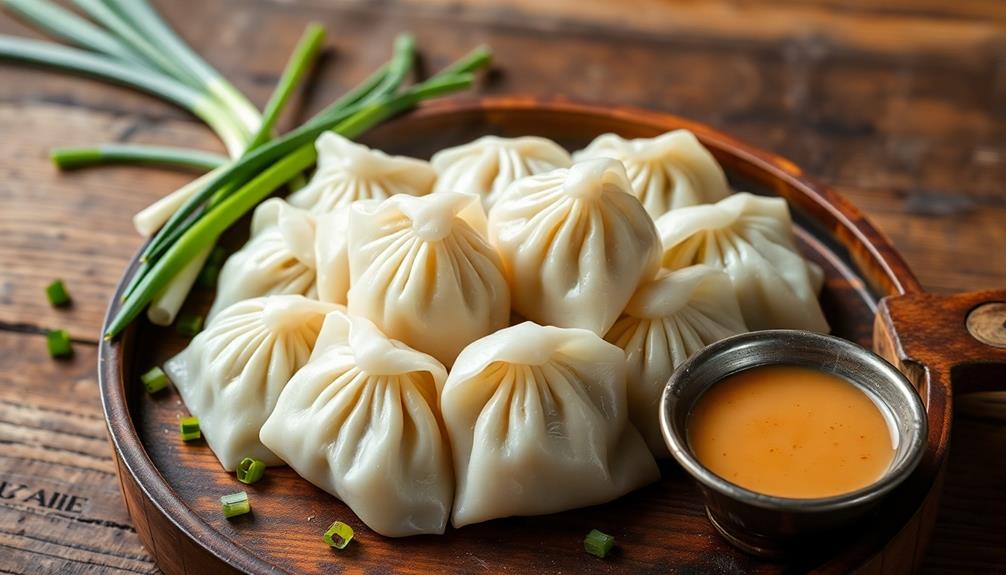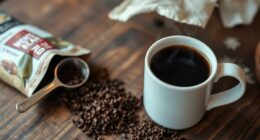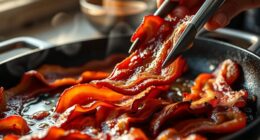Banana bread is a cherished classic that's perfect for beginner bakers. It emerged in the early 20th century as a clever way to use up overripe bananas, reducing food waste. This simple recipe yields a moist, flavorful loaf using just a few pantry staples – ripe bananas, flour, baking soda, butter, sugar, and eggs. You'll mix the dry and wet ingredients separately before combining them, then pour the batter into a greased loaf pan and bake until golden brown. Be sure not to overmix the batter, and enjoy your homemade banana bread fresh from the oven. If you'd like to explore more tasty variations, just keep reading.
Key Takeaways
- Straightforward recipe that uses basic ingredients like flour, baking soda, salt, butter, ripe bananas, sugar, and eggs.
- Moist and flavorful banana bread that is beginner-friendly and easy to make.
- Encourages customization with mix-ins like chocolate chips or walnuts for personal preferences.
- Detailed instructions on mashing bananas, mixing dry and wet ingredients, and baking to ensure success.
- Tips for achieving the perfect texture, including avoiding overmixing and allowing the bread to cool properly.
History
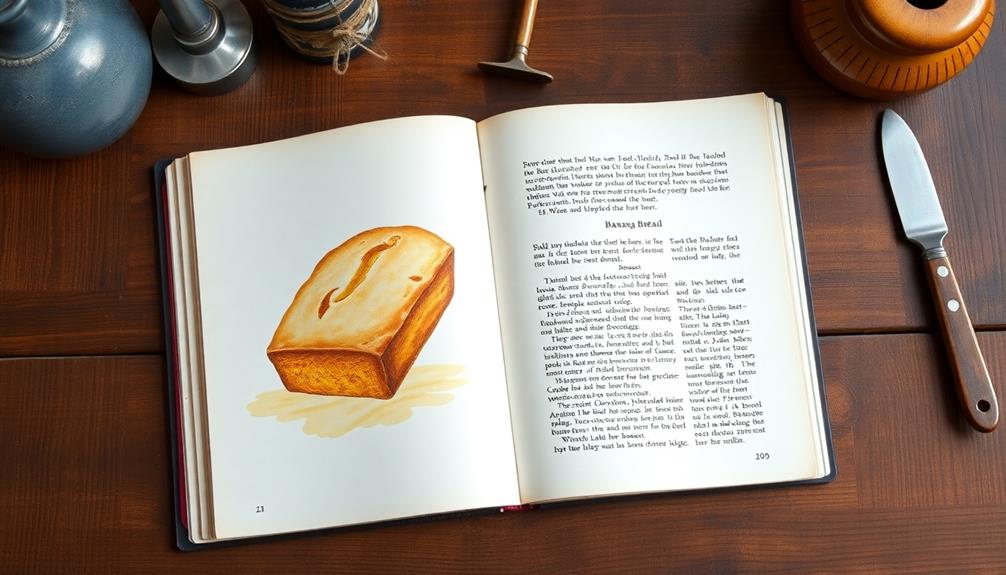
Although the exact origins of banana bread are unclear, it's believed to have emerged in the early 20th century as a way to use up overripe bananas.
Back then, banana bread was a clever solution to food waste, as people didn't want to throw away those spotty, mushy bananas.
Over time, this humble quick bread became a beloved classic, known for its moist texture and comforting flavour.
Today, banana bread is a staple in many households, enjoyed for breakfast, as a snack, or even as a dessert.
It's a versatile recipe that can be customized with various mix-ins, from chocolate chips to walnuts.
Whether you're a seasoned baker or just starting out, banana bread is an easy and delicious way to put those ripe bananas to good use.
With its cozy aroma and satisfying taste, it's no wonder this quick bread has stood the test of time.
Recipe
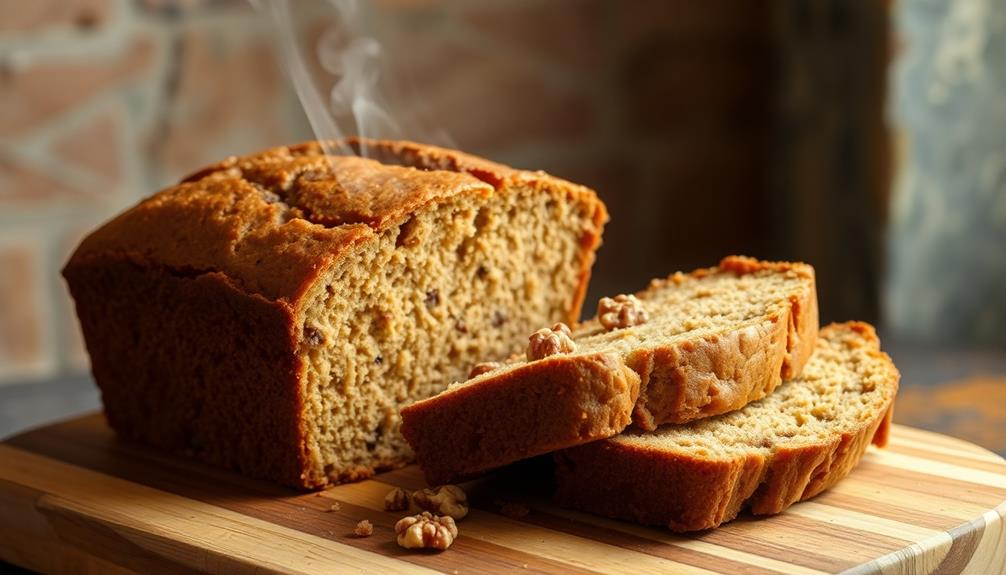
Banana bread is a classic, comforting treat that's perfect for beginners. This easy-to-follow recipe yields a moist, flavorful loaf that's sure to impress.
Baking banana bread is a wonderful way to use up those ripe, spotty bananas sitting on your counter. The natural sweetness of the fruit pairs beautifully with the nutty, cinnamon-spiced batter, creating a delightful harmony of flavors in every bite.
- 1 1/2 cups (190g) all-purpose flour
- 1 teaspoon baking soda
- 1/4 teaspoon salt
- 1/2 cup (113g) unsalted butter, melted and slightly cooled
- 3/4 cup (150g) granulated sugar
- 2 large eggs
- 1 teaspoon vanilla extract
- 1 1/4 cups (300g) mashed ripe bananas (about 3 medium)
Preheat your oven to 350°F (177°C). Grease a 9×5-inch loaf pan with butter or non-stick cooking spray.
In a medium bowl, whisk together the flour, baking soda, and salt. In a separate large bowl, whisk the melted butter and sugar until combined. Beat in the eggs one at a time, then stir in the vanilla and mashed bananas.
Fold the dry ingredients into the wet ingredients just until no dry pockets remain. Pour the batter into the prepared loaf pan and bake for 55-65 minutes, or until a toothpick inserted in the center comes out clean.
Allow the banana bread to cool in the pan for 10 minutes before transferring it to a wire rack to cool completely.
For best results, use very ripe bananas with plenty of brown spots. The riper the bananas, the more natural sweetness they'll provide.
Additionally, be careful not to overmix the batter, as this can result in a dense, tough texture. Enjoy your freshly baked banana bread!
Cooking Steps
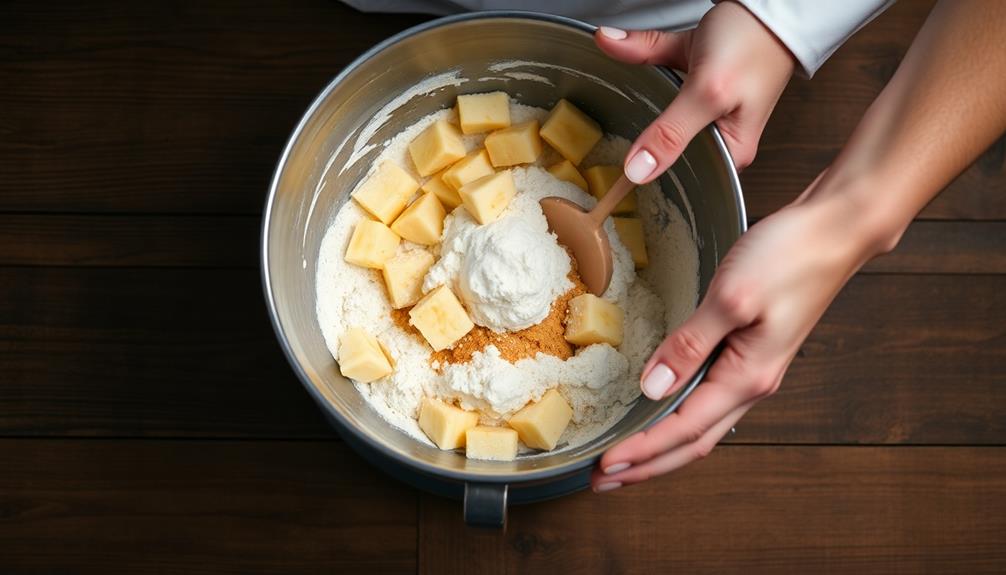
Preheat your oven to 350°F.
Next, mash the ripe bananas in a large bowl until smooth.
Now, add the dry ingredients and stir until just combined, then mix in the wet ingredients.
Step 1. Preheat Oven to 350°F
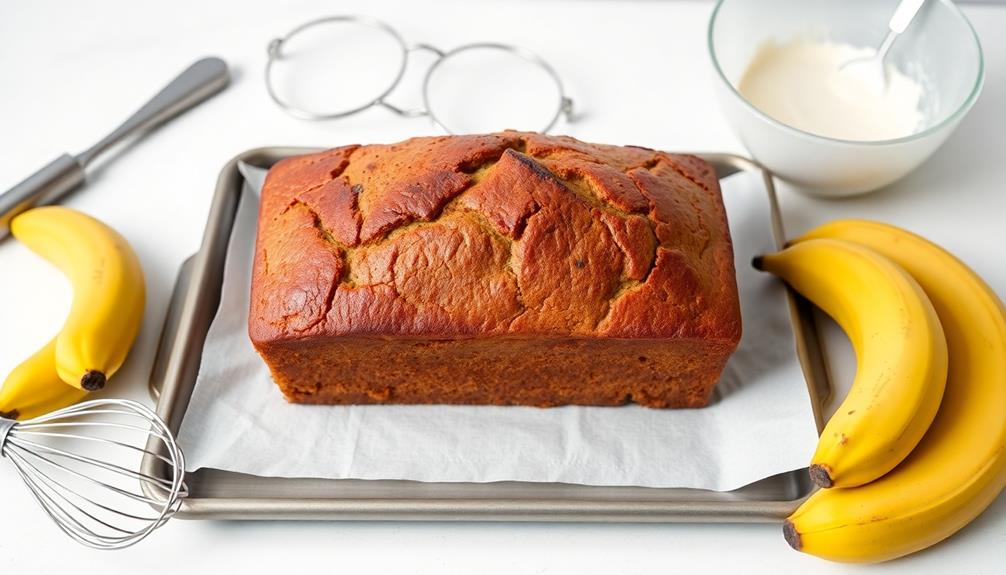
First, you'll want to set your oven to 350°F. This is the optimal temperature for baking your delicious banana bread. Make sure to use an oven thermometer if you're not confident your oven is heating up to the right temperature.
Once the oven is preheated, it's time to grease your loaf pan with butter or non-stick cooking spray. This will prevent the bread from sticking to the sides as it bakes. Be sure to evenly coat the entire surface of the pan for the best results.
Now, you can relax for a few minutes while the oven finishes heating up. This is a great time to start mixing your ingredients or gather any other supplies you'll need. Just keep an eye on the oven – you'll want to pop that bread in as soon as it reaches the perfect 350°F.
With the oven ready, you're one step closer to enjoying a warm, homemade slice of banana bread. Let's move on to mixing the batter!
Step 2. Mash Bananas in a Bowl
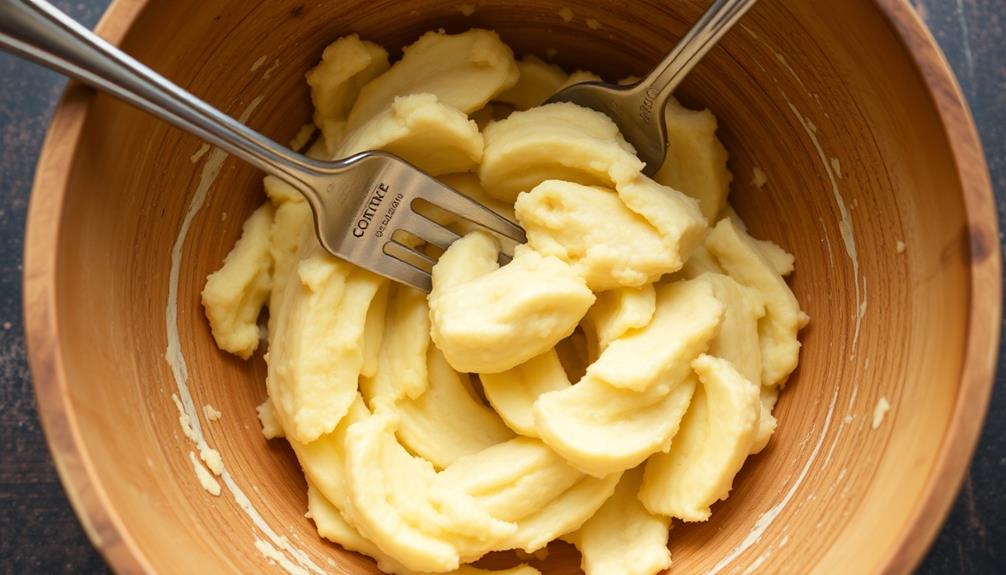
With the oven preheated and ready, you can now turn your attention to mashing the bananas. Grab a medium-sized bowl and place the overripe bananas inside. Using a fork or potato masher, start mashing the bananas until they're smooth and creamy.
Don't worry if there are still a few small chunks – a little texture is perfectly fine. As you mash, the bananas will release their natural sweetness, which will be a crucial ingredient in your delicious banana bread.
Once the bananas are nicely mashed, take a moment to give the bowl a quick stir to ensure the consistency is even throughout. You want the mashed bananas to be well-incorporated, with no pockets of unmixed fruit.
This will help create a uniform texture in your final baked bread. With the bananas ready, you can now move on to the next step, where you'll be adding the other wet ingredients to the mix. Just keep that fork handy, as you'll be using it again soon!
Step 3. Add Dry Ingredients
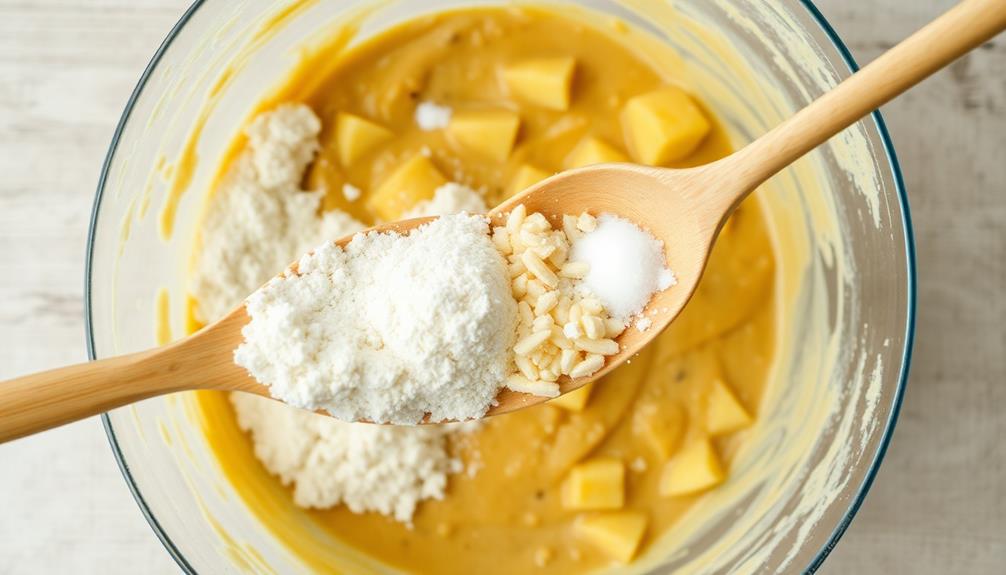
With the mashed bananas ready, you can now shift your focus to incorporating the dry ingredients. In a separate medium-sized bowl, whisk together the all-purpose flour, baking soda, and a pinch of salt. This step helps evenly distribute the leavening agent and seasoning throughout the batter.
Be sure to use a light hand when measuring the flour, as packing it down can lead to a dense and heavy texture in the final bread.
Next, you'll want to gradually add the dry ingredients to the bowl with the mashed bananas. Gently fold the mixture together using a rubber spatula, taking care not to overmix.
Overmixing can develop the gluten in the flour, resulting in a tough and chewy banana bread. Fold just until the dry ingredients are incorporated and no dry pockets remain.
With the wet and dry components combined, your banana bread batter is now ready for the next step.
Step 4. Add Wet Ingredients
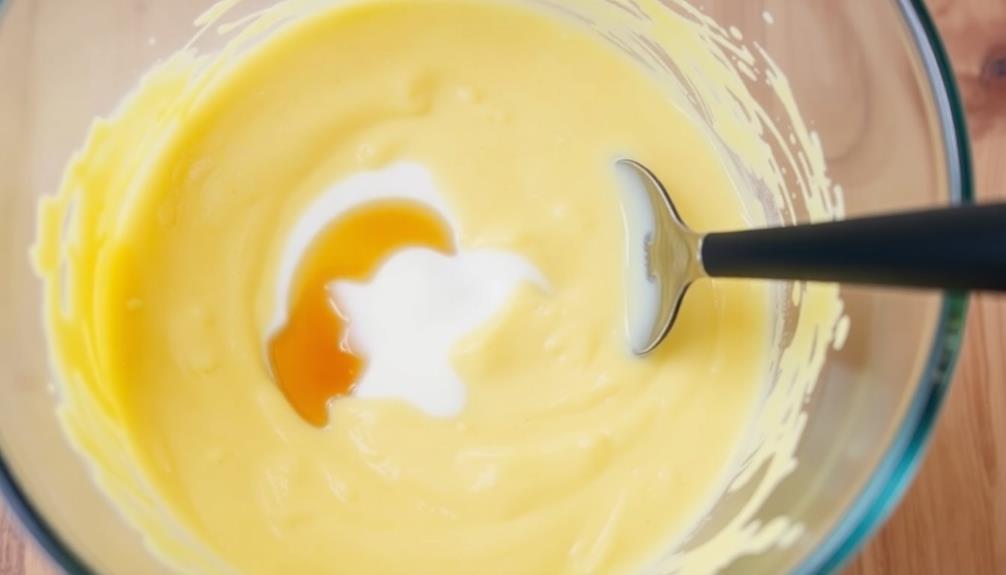
The wet ingredients play a crucial role in creating the perfect texture for your banana bread. In a separate bowl, whisk together the mashed bananas, eggs, vegetable oil, and vanilla extract until well combined. The bananas provide natural sweetness and moisture, while the eggs help bind the ingredients together.
The oil contributes to the bread's soft and tender crumb, and the vanilla extract adds a delightful flavor.
Gently pour the wet ingredients into the bowl with the dry ingredients. Use a rubber spatula to carefully fold the mixtures together, being careful not to overmix. Overmixing can result in a dense, tough texture.
Mix just until the dry ingredients are fully incorporated, and you see no more pockets of flour. The batter should be thick and slightly lumpy, with a smooth, uniform appearance.
Step 5. Bake for 55-60 Minutes
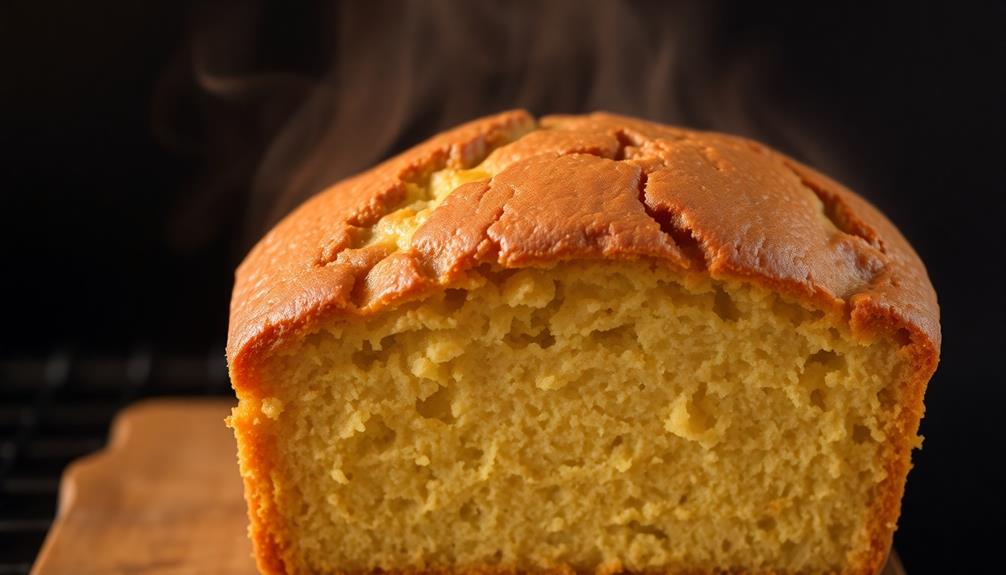
Preheat your oven to 350°F (175°C). Once the temperature's reached, it's time to bake your banana bread.
Grease a 9×5-inch loaf pan with butter or non-stick cooking spray. This will help the bread release easily once it's done.
Carefully pour the banana bread batter into the prepared pan, smoothing the top with a spatula.
Pop the pan into the preheated oven and set a timer for 55-60 minutes. The bread's done when a toothpick inserted in the center comes out clean.
Keep an eye on it towards the end – you don't want it to overbake and dry out.
Once the timer goes off, use oven mitts to remove the pan from the oven.
Let the banana bread cool in the pan for 10 minutes before transferring it to a wire rack. This gives the loaf time to firm up a bit before you slice into it.
Now you're ready to enjoy your freshly baked homemade banana bread!
Final Thoughts
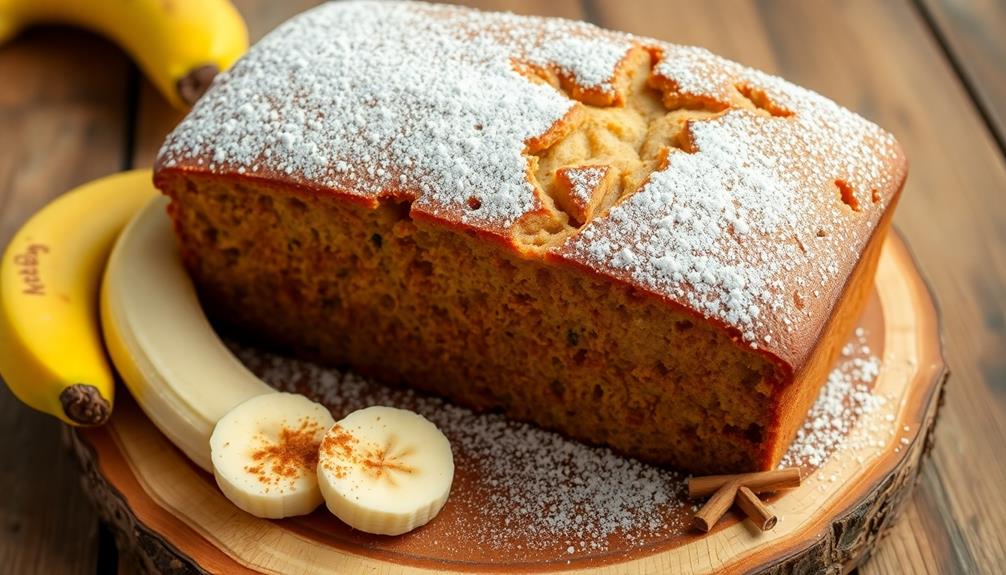
As a beginner in the world of baking, you may have found this banana bread recipe to be a delightful challenge. Congratulations on making it this far!
You've successfully mixed the batter, poured it into the pan, and baked the loaf to perfection. Now, it's time to sit back and enjoy the fruits of your labor.
The wonderful aroma of freshly-baked banana bread should be wafting through your kitchen, enticing you to slice into that golden-brown loaf. Go ahead and do just that – take a bite and savor the moist, flavorful result.
Feel proud of yourself for trying a new recipe and mastering the technique.
This banana bread isn't only a tasty treat, but it's also a testament to your growing baking skills.
As you continue to explore the world of baking, remember the sense of accomplishment you felt when pulling this loaf out of the oven. Use that feeling to motivate you to take on new challenges and expand your culinary repertoire.
Frequently Asked Questions
Can I Use Overripe Bananas for Banana Bread?
Absolutely! Overripe bananas are perfect for banana bread. They're sweeter and more flavorful, making your bread extra moist and delicious. Don't hesitate to use those spotty, soft bananas – they'll give your bread an amazing taste.
How Do I Know When the Banana Bread Is Done?
You'll know your banana bread is done when a toothpick inserted into the center comes out clean. The top should be golden brown and a knife inserted should come out with just a few moist crumbs attached.
Can I Freeze Banana Bread for Later?
Yes, you can freeze banana bread for later enjoyment. Simply wrap it tightly in plastic wrap or aluminum foil, then place it in a freezer-safe bag. When ready to eat, thaw it at room temperature before slicing and serving.
What Are Some Tasty Mix-In Ingredients to Add?
To add extra flavor and texture to your banana bread, you could try mixing in chocolate chips, chopped nuts, dried fruit, or even a swirl of peanut butter or cream cheese. Get creative with your mix-ins!
How Should I Store Leftover Banana Bread?
To store leftover banana bread, you can wrap it tightly in plastic wrap or aluminum foil and keep it at room temperature for up to 3 days. For longer storage, you can refrigerate it for up to a week or freeze it for several months.

